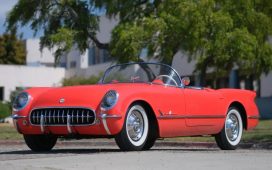The electric vehicle (EV) revolution is upon us, but its path is far from smooth. While the promise of cleaner transportation and reduced carbon emissions is undeniable, the industry faces significant headwinds, from political hurdles to economic challenges. This article explores the current state of the EV market, examining both the exciting advancements and the persistent obstacles that need to be overcome.
Government Policies and their Impact
The recent actions of the Trump administration, including cuts to regulations and financial incentives, have dealt a blow to the burgeoning electric trucking industry. Short-haul trucking companies, particularly those operating near ports in Southern California, had embraced electric trucks due to their suitability for shorter routes and overnight charging. However, these policy changes threaten to undermine the industry’s growth.
Conversely, Maryland’s commitment to EVs is evident in its ambitious goals and programs. The state is aggressively pursuing a transition to zero-emission vehicles by 2035, with initiatives to expand charging infrastructure, particularly in underserved communities. However, even Maryland is not immune to the impact of federal policy reversals, as seen in the lawsuit challenging the blocking of funding for EV charging stations.
- Federal Uncertainty: The fluctuating federal landscape regarding EV support creates uncertainty for manufacturers and consumers alike.
- State-Level Initiatives: States like Maryland are actively pursuing their own EV initiatives, but these often face challenges from contradictory federal policies.
- Economic Impacts: Tariffs on imported EV components, as implemented by the Trump administration, can significantly increase the cost of electric vehicles, impacting consumer affordability.
The EV Market: Challenges and Opportunities
The cost of running and maintaining electric vehicles remains a major concern. Data from Collaborative Mobility UK (CoMoUK) shows that operating an EV in a car-sharing fleet is significantly more expensive than a petrol car, largely due to higher charging costs and taxes. This is impacting the adoption rate even within car-sharing programs, which have historically been early adopters of electric technology.
Despite these challenges, events like Company Car in Action (CCIA) showcase the growing number of manufacturers committing to the production of electric vehicles. MG Motor UK, for example, is highlighting several new EV models at CCIA 2025, demonstrating continued investment in the sector. The wide range of brands participating – including Tesla, BYD, and others – underscores the industry’s ongoing development and diversification.
| Model | Manufacturer | Type | Key Features |
|---|---|---|---|
| MG S5 EV | MG Motor UK | SUV | New Generation Large B Segment SUV |
| MG HS PHEV | MG Motor UK | SUV | Up to 75-mile EV range, 6% BiK |
| MG4 | MG Motor UK | Hatchback | Multi-Award Winning |
| MG ZS HEV | MG Motor UK | SUV | Hybrid Electric Vehicle |
The Future of Electric Vehicles
The future of electric vehicles hinges on several factors: government support (consistent policies are crucial), cost reduction (making EVs more affordable is paramount), charging infrastructure (convenient and accessible charging networks are essential), and consumer education (addressing concerns about range anxiety and charging). While challenges remain, the long-term environmental benefits and technological advancements continue to drive innovation and investment in the EV sector.
The ongoing advancements in battery technology, such as faster charging times and improved energy density, promise to further enhance the appeal and practicality of electric vehicles. Continued investment in research and development, along with supportive government policies, are key to ensuring a smooth transition towards a sustainable transportation future.
In short, while the road to widespread EV adoption may be bumpy, the destination—a cleaner, more sustainable transportation system—remains a worthwhile goal.






